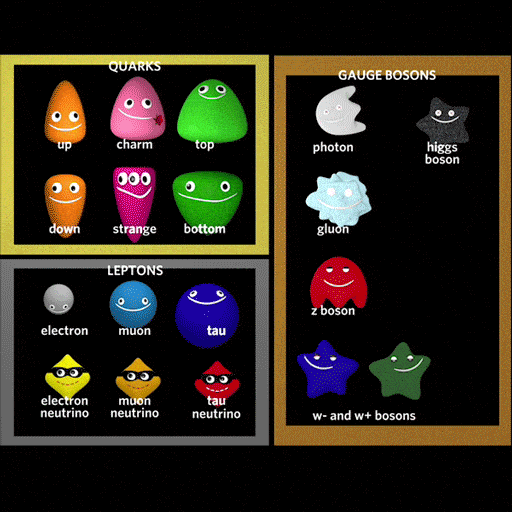In the intricate tapestry of quantum chromodynamics (QCD), gluons emerge as the quintessential mediators of the strong force, the fundamental interaction that binds quarks together to form protons, neutrons, and ultimately, the nuclei of atoms. However, an enigmatic question looms large within the scientific community: Are there free gluons roaming the universe? The answer is more complex than a simple ‘yes’ or ‘no.’ This article delves into the nuances of gluon confinement, the implications of their behavior, and the overarching principles of strong interactions.
To begin, one must appreciate the fundamental role of gluons. Within the Standard Model of particle physics, gluons are massless gauge bosons, compellingly responsible for the color charge, a property analogous to electric charge in electromagnetism but existent in three varieties: red, green, and blue. This property dictates how quarks interact with one another, with gluons serving as the intermediary force carriers. The strong force, mediated by gluons, is immensely powerful, yet it is characterized by one of its most bewildering attributes: confinement.
Confinement refers to the phenomenon where gluons and quarks cannot exist in isolation. Instead, they are perpetually bound within hadrons—the particles such as protons and neutrons composed of quarks, held together by the strong force mediated by gluons. This is akin to a tightly woven fabric wherein the threads (quarks) are interconnected through an underlying web of interactions (gluons). When one attempts to separate quarks, the energy input does not successfully yield free quarks or gluons but instead leads to the production of new quark-antiquark pairs, resulting in the formation of additional hadrons.
This complex interplay is exacerbated by the concept of asymptotic freedom, a phenomenon where quarks and gluons behave as free particles at extremely high energies or temperatures. As quarks approach each other, they exhibit weaker interactions—a stark contrast to their behavior at low energies, where they become strongly correlated and inseparable. Thus, while quarks and gluons exhibit a façade of freedom at high energies, this liberated state is ephemeral and contingent upon specific conditions, such as those present during the earliest moments after the Big Bang.
Now, the inquiry arises: If free gluons do not exist under normal conditions, why do their signatures permeate the universe? This is where color confinement provides an irrefutable answer. The dynamics of gluons are such that they perpetuate their stacks within bound states of matter. Consequently, the universe is rife with manifestations of gluon activity. For instance, high-energy collisions in particle accelerators like the Large Hadron Collider (LHC) lead to transient states where gluons can be observed, albeit fleetingly, as they rouse quarks from their confines, allowing for the dramatic production of exotic hadrons.
An element of intrigue lies in the strong force’s behavior at extreme densities, such as that found in neutron stars or during the conditions of a quark-gluon plasma (QGP). The QGP, a state of matter theorized to have existed microseconds after the Big Bang, is an ephemeral phase in which quarks and gluons become de-confined. Within this highly energetic soup, gluons may indeed behave like free particles, flowing unhindered amid the quarks, albeit in a state that is drastically different from what we experience in the everyday universe. Thus, while gluons may not be manifestly free in typical conditions, their interactions and contributions resonate vibrantly throughout the cosmos.
When contemplating the existence of free gluons, theoreticians are charged with a challenge: to fathom the implications of gluons within the framework of our universe while adhering to the confining principles of QCD. Theologians of particle physics grapple with questions surrounding dark matter, the cosmos’ unseen component, and whether novel particles associated with gluon-like interactions might elucidate observational phenomena. Such inquiries pose a playful challenge, urging physicists to consider if the enigmatic properties of gluons might underlie new physics beyond the Standard Model.
In addition, the interplay between gluons and other fundamental forces ignites a realm of theoretical exploration. For instance, if free gluons were to exist, what ramifications would ensue regarding the early universe’s evolution, baryon asymmetry, or perhaps even implications for gravitational theory? Various avenues beckon, each more tantalizing than the last.
Interestingly, the freezing out of gluons during the cooling epochs of the universe further emphasizes their confinement. The expanding universe, with its cooling matter, forced gluons into a confined state alongside quarks, leading to the formation of a primordial plasma, ultimately coalescing into the atomic structure we observe today.
Beyond theoretical pursuits, experimental investigations into gluonic matter have yielded fascinating insights. Collisions designed to probe the strong force often unveil new particles, hinting at the existence of hybrid states where various quarks and gluons interact under tumultuous conditions. These experiments underline the tenacity of gluon dynamics and their intimate connection with the genesis of matter.
In conclusion, the question of free gluons luminesces a multitude of answers that pivot around the framework of confinement and asymptotic freedom inherent in QCD. While the everyday universe reveals no freely roaming gluons, the secrets locked within high-energy collisions and celestial phenomena suggest that their ephemeral existence could be observed under specific conditions. The interplay of gluons not only underlines the interconnectedness of fundamental particles but also propels forward the enchantment of inquiry into the nature of the universe itself. Thus, the absence of free gluons constitutes not a void, but rather a rich landscape brimming with possibilities waiting to be explored.












